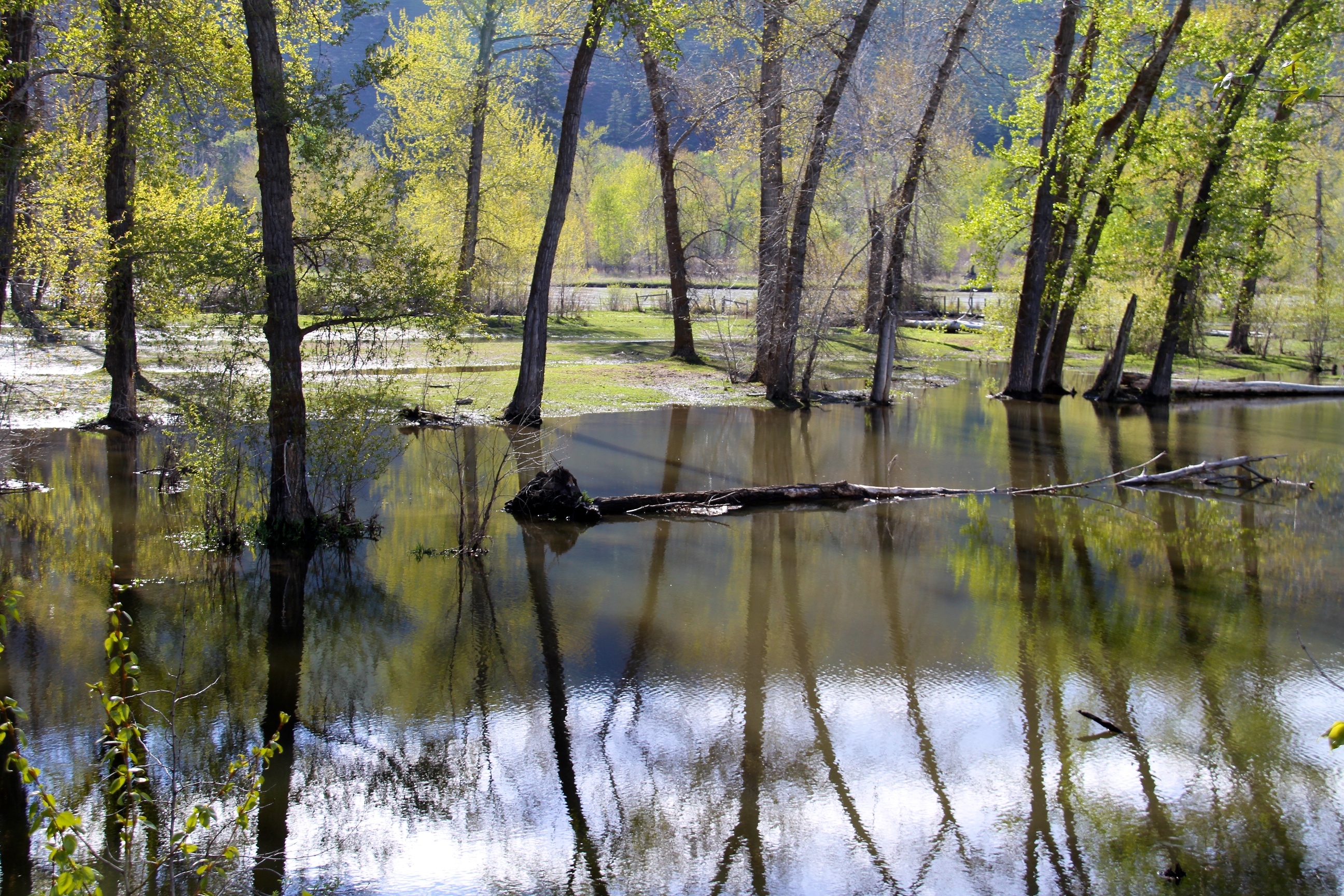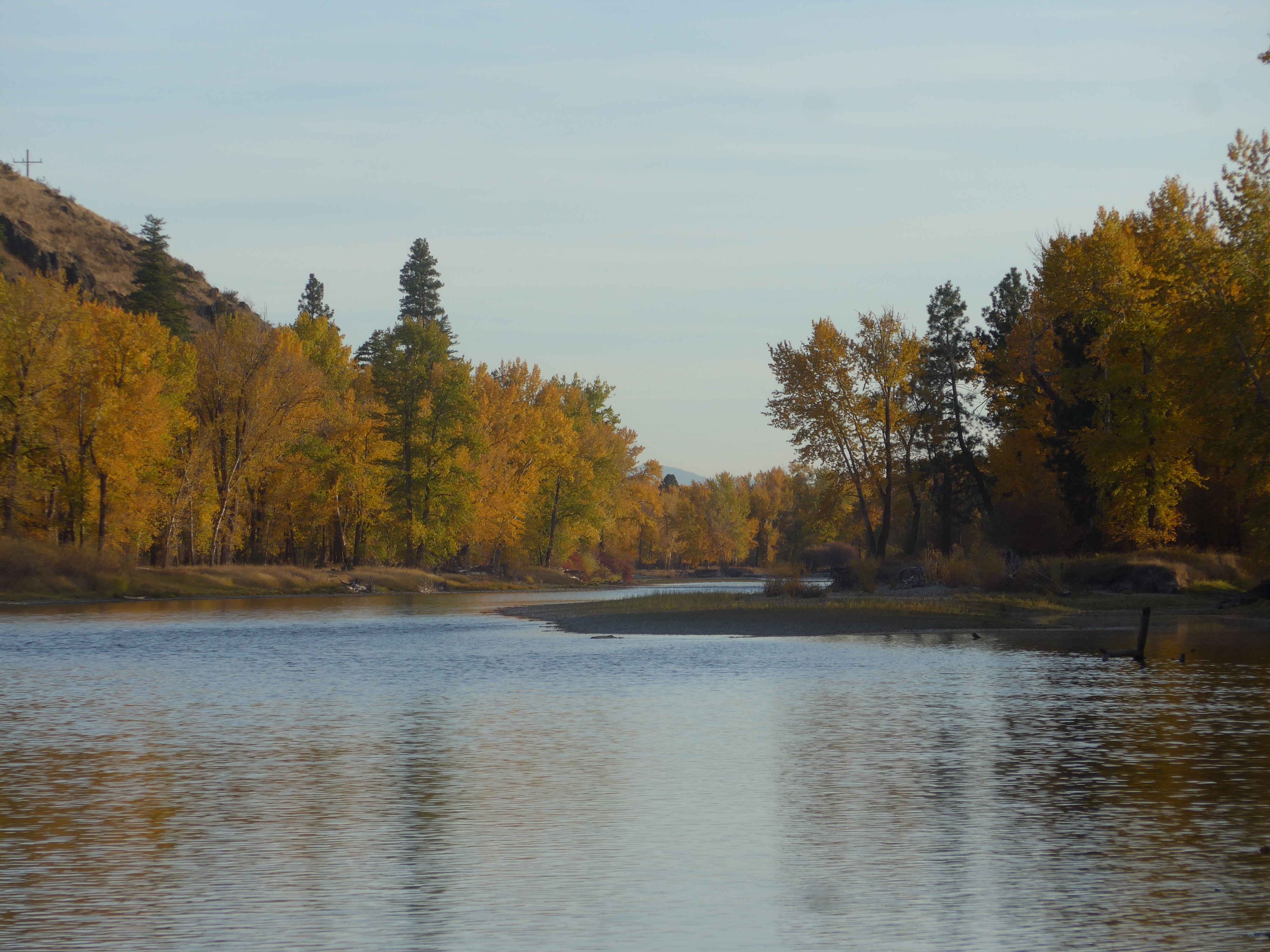Ever since Dunrovin played a minor role in a Zoopharmacognosy Workshop that occurred in Lolo in the spring of 2014, we have been increasingly aware of the medicinal use of plants by both animals and humans. In fact, we have been in conversations with Michelle Coburn, a student of applied zoopharmacognosy from Anchorage, Alaska, about working with her to develop a medicinal regime for our horses to allow them to self medicate when needed. In February of 2015, we worked together with Michelle to conduct some experiments using medicinal plants with our horses, and continue to seek ways of bringing the benefits of medicinal plants to our animals.
Our increased awareness of all things zoopharmacognosy made us sit up and pay attention when we spotted an kestrel that visited the ospreys’ nest stripping and eating the bark from a cottonwood branch. Cottonwood branches often make up the majority of the building material used by the ospreys and we have noticed them in the past stripping the inner bark to create a soft duff for their eggs, but we had never seen them eat those strips. But as the video below clearly shows, this little kestrel was very intent on eating bits of the bark.
Luckily we had Michelle to turn to with our questions and we were very intrigued by her response:
The Populus species includes Black Cottonwood (P. trichocarpa) as well as Quaking Aspen (P. tremuloides), two of the most common trees found throughout riparian areas in the West. The Black Cottonwood which is also known in some areas as balsam poplar, is a large and predominant tree in riparian habitats. The bark of the young trees is white and smooth, and later becomes grey and deeply furrowed with age as the tree towers high above other trees around it. You can many times tell where a stream or water source is located from far away by the presence of these tall giants in the distance.
Since animals have co evolved with the plant life for millennia, their knowledge of how to heal themselves using the plants in their environment is innate. Various bird species can oftentimes can be seen adding sticks to their nests which have antibacterial properties, most especially raptors and birds of prey. Additionally, eating various plant parts offering them access to these medicinal properties to maintain their health or heal from wounds, infections or injuries. Details on how animals know which plants to select was offered in our presentation on Applied Zoopharmacognosy: Helping Animals Heal Themselves.
Even though the wood is not the first choice by humans as fuel, the tree offers many medicinal and healing benefits for all who chose to partake. All of the poplars contain varying amounts of salicin, the chemical component most commonly found in aspirin. Edible and Medicinal Plants of the West, by Gregory L Tilford states that, “All poplars contain varying amounts of salicin, and preparations of the leaves or inner bark (cambium) can be used to relieve pain, inflammation, and fever. Medicinal Plants of the Mountain West states the “antiseptic bark is also used in liniments for cuts and scratches.”
The buds and barks of Poplar varieties were official remedies listed in The United States Pharmacopoeia from 1895 to 1965. Their medicinal use dates to the second century A.D., for the commonly termed “balm of Gilead”, made from the sticky substance surrounding the buds in spring. It is still commonly used today by herbalists as a broad spectrum anti-inflammatory and wound healing remedy (vulnerary), great for cuts, abrasions, bug bites, and the like.
Michelle Coburn





















